The most powerful BI & Reporting tools for Presto

Presto is an open source distributed SQL query engine for running interactive analytic queries against data sources of all sizes.
Developed by Facebook to run queries against their 300PB-data warehouse back then in 2008, Presto has the power to handle perabyte-sized warehouses without any problem. That's why such a big corporate like Grab - Uber's rival - has shifted from Redshift to S3 + Presto.
Presto's popularity attracts the attention of lots of Business Intelligence vendors. As many claims to support Presto, data analysts will easily find themselves overwhelmed by the number of choices they are presented with.
This blog post will give you a pointer to choose the most suitable BI & reporting tools for your Presto.
Top 5 Presto BI & Reporting tools
- Holistics
- Looker
- PowerBI
- Tableau
- Sisense
Holistics
Holistics is a self-service BI tool that lets data analysts model and transforms data in Presto and also many SQL data warehouses. Then, non-technical users can run their own analysis to insights without having to rely on the analysts any more.
Holistics is best-known for its data modeling capability, which can help analysts create a single source of truth where you can apply business logic to your own data and make sure it is accurate, maintainable, and re-usable.
You can learn how to connect Holistics to Presto in their detailed guide here.
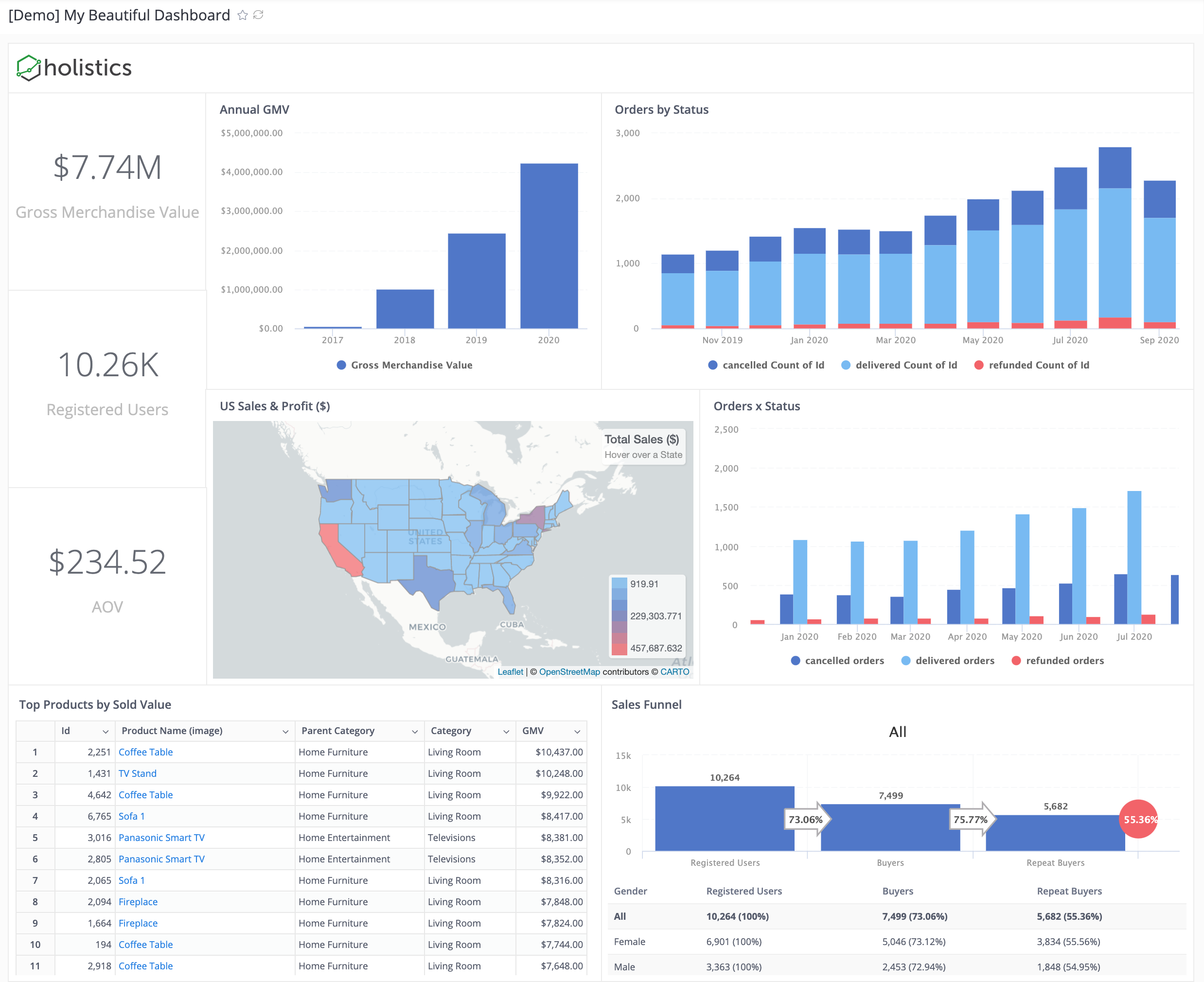
Pricing
Holistics generously offers a free plan after your 14-day trial expires, which does not charge you based on the number of users, but on the number of query runs. That means, if you are a bootstrapped startup with limited budget, Holistics is the right tool for you. It will only start charging as your company and its analytics need scales up.
Holistics starting price of $200/month is impressively affordable when compared to almost all competitors on the market, especially when its features are equally powerful and plentiful. Even if your company scales up with more analysts joining the data team, you will not need to worry about cost per additional head count.
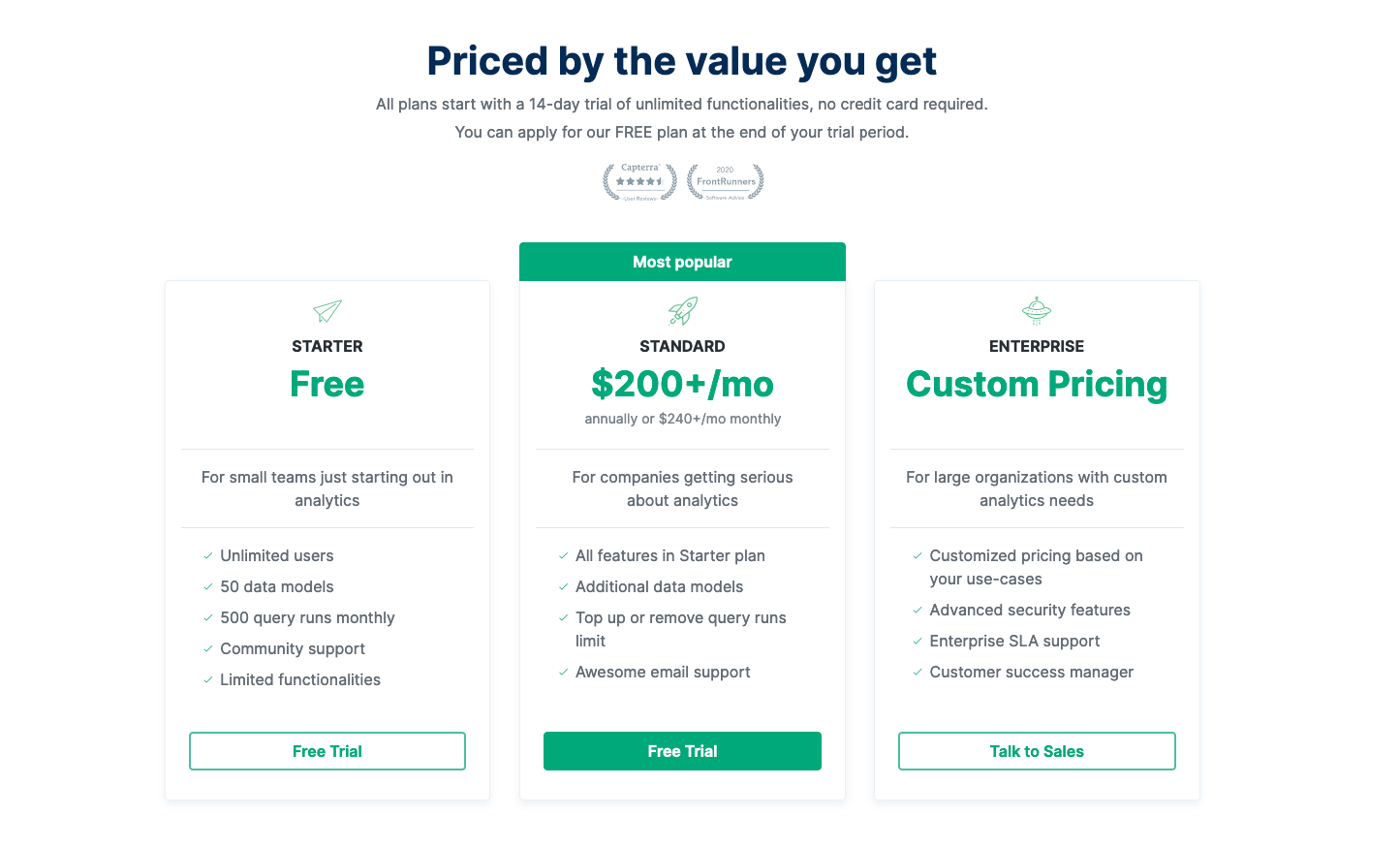
Pros
- Allow you to query Presto using customizable SQL queries and get fast results with its cache layer
- Materialized views of query results are stored back to your own SQL database, for immediate access and fast visualizations and reports.
- Automated scheduling of reports and dashboard with the latest data in Presto, sent directly to your email inbox.
- Advanced SQL Editor: Version History, Autocomplete, SQL Snippet, Highlighting, Auto-formatting, Query History, Custom Advanced Logic...
- Drag-and-drop interface for business users to explore data and generate reports to answer ad-hoc questions.
- Competitive pay-as-you-go pricing model, which only scales as your company scales.
Cons
- Though powerful, Holistics is a fairly new tool to the market. A lot of advanced features are still on their roadmap.
- Holistics has not supported Git-integration and version control, which is preferable to a lot of advanced analysts.
- Dashboards are not as interactive as other competitors'. Currently Holistics only supports drill-down by date and drill-through to another dashboard.
Looker
Recently joined as a part of Google Cloud Platform, Looker is a powerful BI tool that provides an innovative approach for real-time data exploration and analytics.
Looker has powerful dashboard capabilities that can cover most data discovery use cases. However, unlike Power BI, it requires a full semantic model for storing all your business logic and metrics without having to add multiple versions of a slightly different metric to your database tables. That means you cannot just take Looker, point it at a database, and get your visualizations in minutes. It requires an upfront definition using their own language LookML, which will take a considerable amount of time to master.
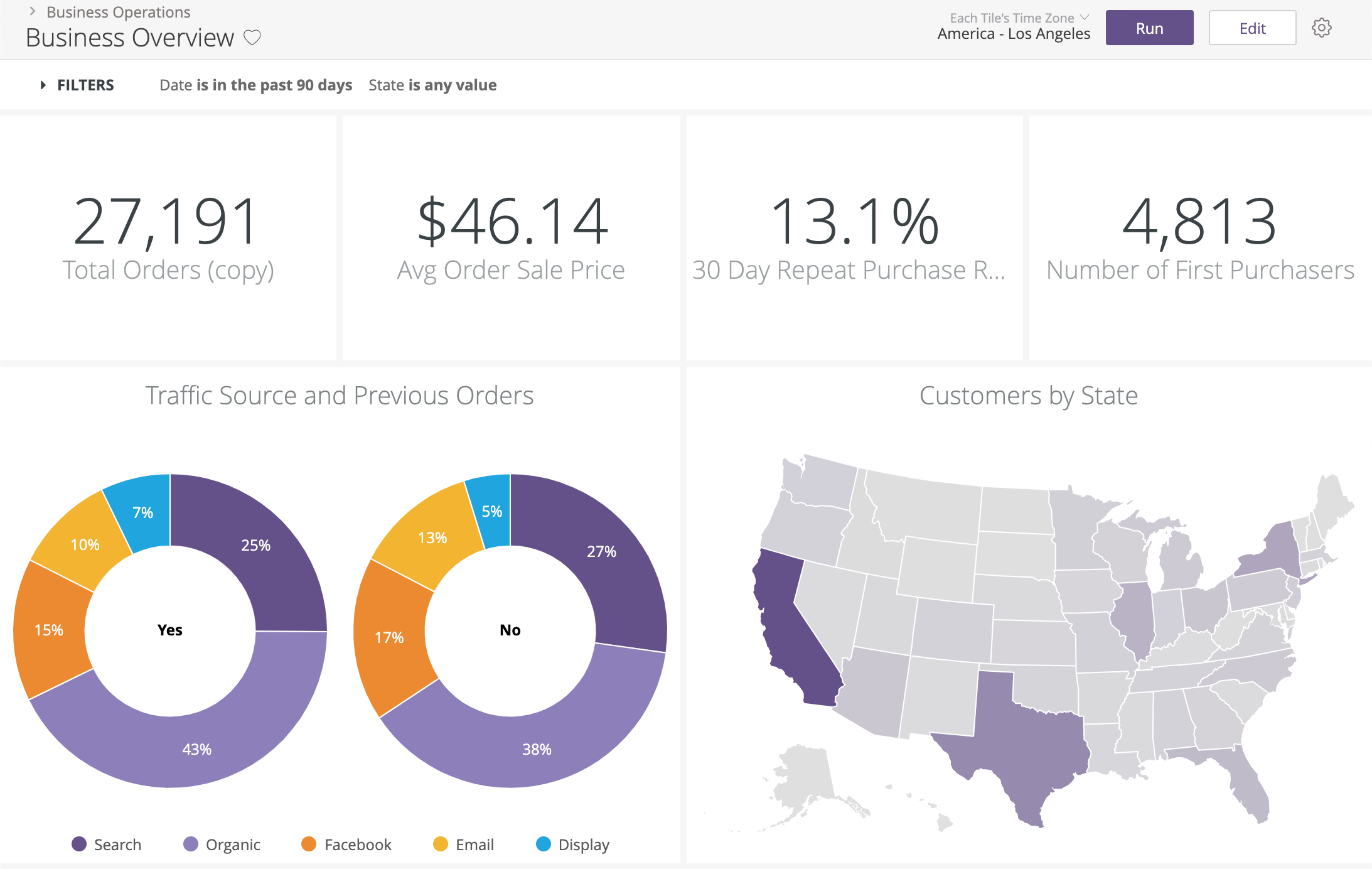
To connect Looker to Presto, follow the instructions here.
Pricing
Looker does not publicly release its pricing information because they will customize for each company. From my conversations with a few Looker users, the price could range from $3000 - $5000 per month for 10 users with an annual subscription. As I mentioned above, Looker is designed for companies with mature and dedicated data teams that are willing to adopt a completely new modeling language and spend time setting up Looker to fit their whole data stack.
Pros
- Looker runs entirely in-browser, so there’s no need for desktop install and it's better for collaboration and data delivery between internal and external users
- Looker operates entirely on the data in your database. That means that you’re operating directly on your full dataset and getting all the horsepower of your database, whether that be an MPP like Vertica, Redshift, Bigquery; a SQL-on-Hadoop setup like Impala or Spark; or a standard RDBMS like MySQL or Postgres
- Automated reporting - Looker allows you to schedule emails for daily/weekly/monthly reports or send alerts if there are anomalies in data.
- Looker has GitHub integration, so you can see every change made to the modeling layer and combine the work of multiple developers seamlessly
Cons
- Looker has a steep learning curve when it comes to adopting a new language (LookML) & the model-view approach for the end-users. You definitely need to have an internal team that is dedicated to just setting it up and getting the rest of the people on board.
- Being locked in the platform. LookML takes over most of the work of preparing tables for visualization. Moving from Looker to another visualization tool will require additional work to migrate everything that has been defined by LookML.
- Although Looker provides a large library of custom charts, it can be very difficult to customize the visualizations to your exact need.
For more detailed BI tool list and analysis, check out:
PowerBI
PowerBI is quite well-known in the BI industry, especially for enterprises that adopt the Microsoft ecosystem. It supports an impressive number of data sources, giving companies the power to centralize their data in one place.
PowerBI has a user-friendly interface with amazing data visualizations capabilities, ranging from simple dashboards that analyze eCommerce metrics to highly complicated ones like the NFL Football analysis one below.
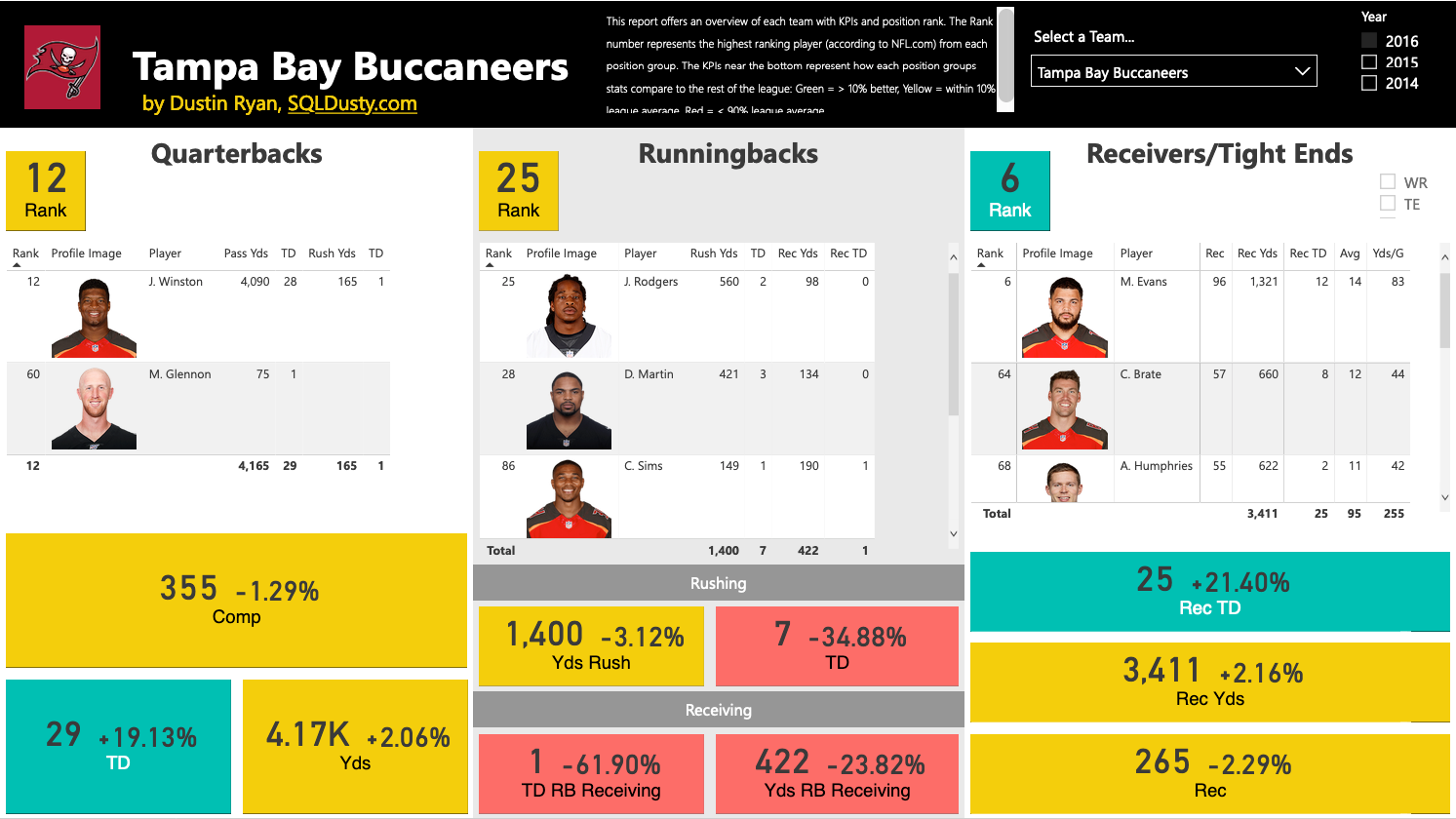
Connecting PowerBI to Presto requires an OBDC connection. You can follow the instructions here.
However, please note that Presto can only be used with PowerBI Desktop.
Pricing
PowerBI pricing is also attractive for small-scale companies with small data teams. If you're an individual and only need PowerBI on your local computer to do analysis, then you can download the desktop version for free. However, if you want to use more Power BI services and publish your reports on the cloud, you can take the Power BI Cloud service solution for $9.99 per user per month.
Please note that if your company is concerned about security and on-premise deployment, the price goes up considerably at $4,995 per month, with an annual subscription.
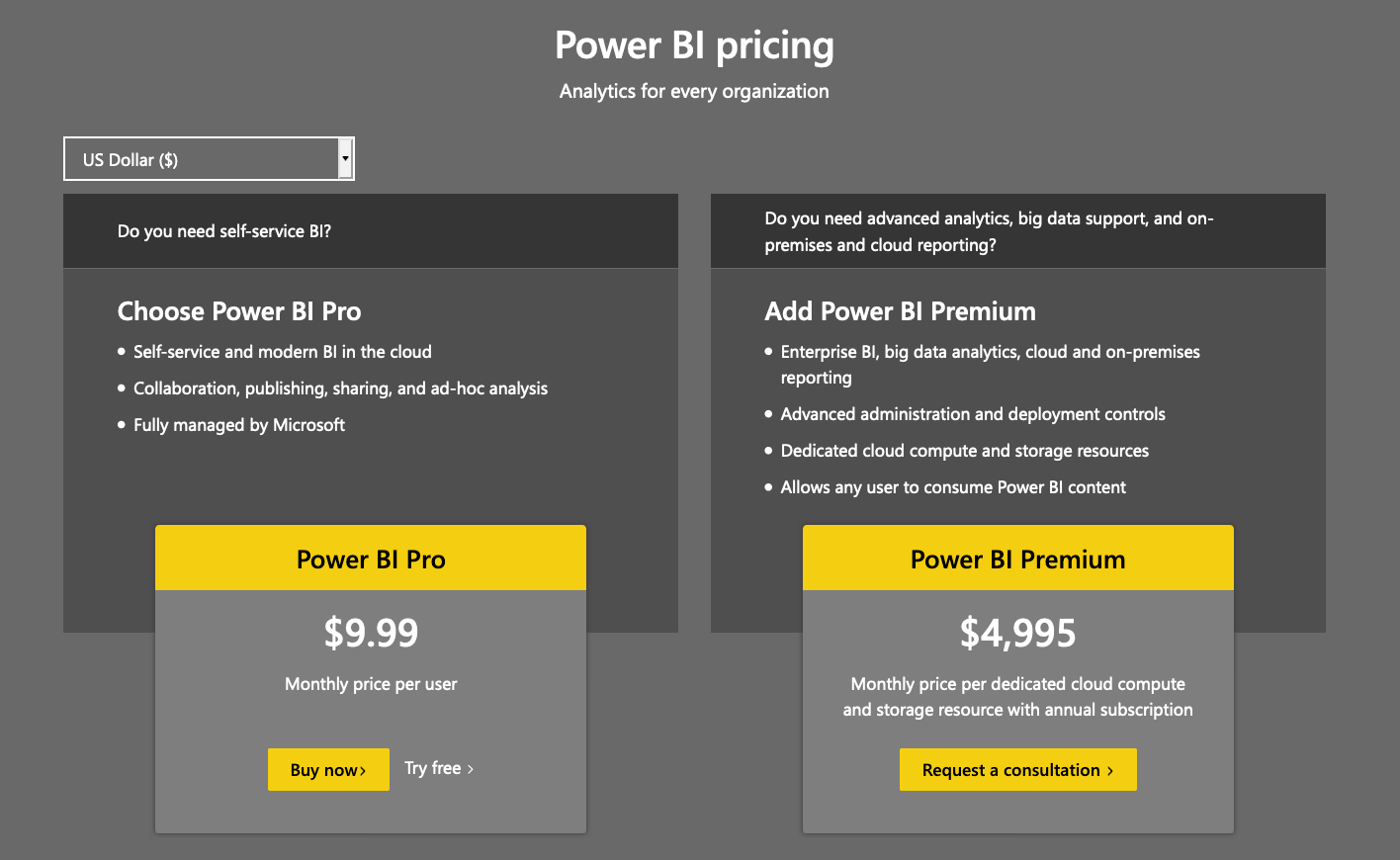
Pros
- Support hundreds of data sources (which makes PowerBI the go-to BI tool for a majority of companies!)
- Powerful data visualization capabilities. Besides the basic visualization types, PowerBI allows advanced users to choose from a market place of custom visuals or create their own using well-known Javascript libraries
- Frequent updates and innovations. Follow PowerBI's blog and you will see the team is really active in pushing new features and changes.
- PowerBI has an active community of power users and employees who are willing to deep dive into your use case to help you out.
Cons
- PowerBI has a steep learning curve. Data analysts must learn DAX (Data Analysis Expression) language to fully leverage PowerBI's power, which is complicated and rigid sometimes.
- Limited data delivery capability. If you want to view a PowerBI report, you must have PowerBI desktop installed or have PowerBI Report Server already setup. This is difficult for Mac users since PowerBI can only be installed on Windows devices.
Tableau
Tableau is most famous for its unparalleled capabilities of visualizing information. The application’s data visualizing quality is superior to what Tableau software competitors offer. If you want to create complicated dashboards with seamless interactivity, Tableau is definitely the must-have tool.
To connect Tableau to Presto, read more here.
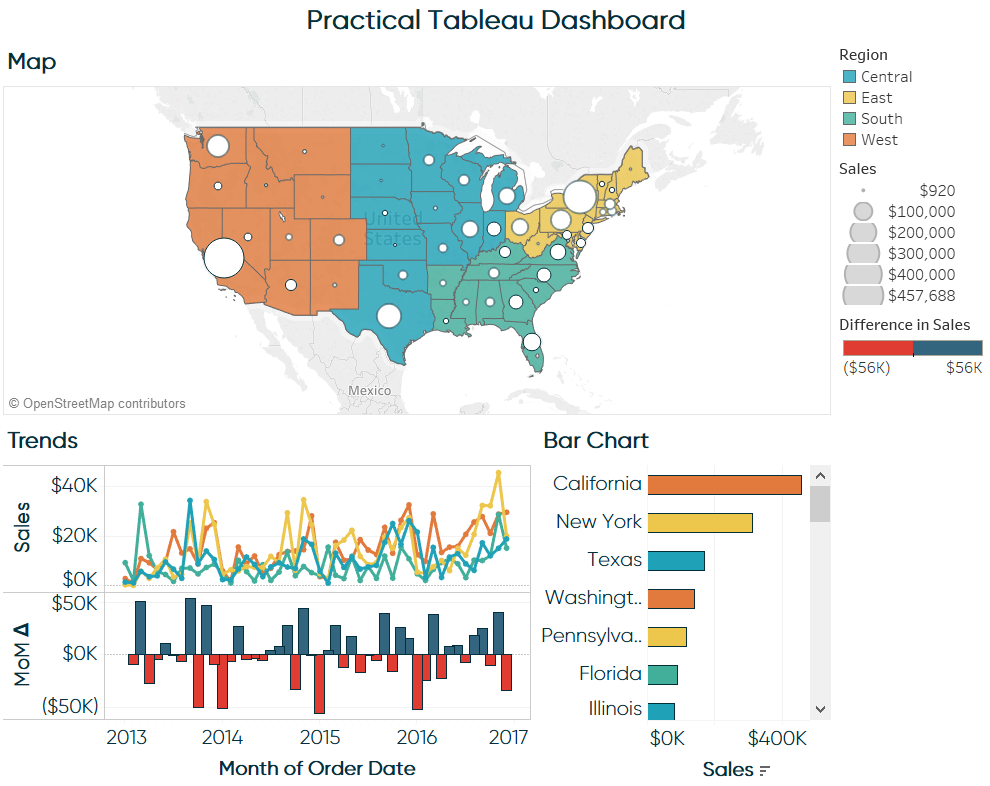
Pricing
Tableau pricing is fairly complicated and is charged both based on your use-case and number of team members. Moreover, Tableau also charges based on the roles of users, with a Creator costing $70/month, an Explorer $35, and a Viewer $12. Since this number is dependent on your business, you really should plan ahead and prepare for an upsurge of additional cost if you decide to purchase Tableau.
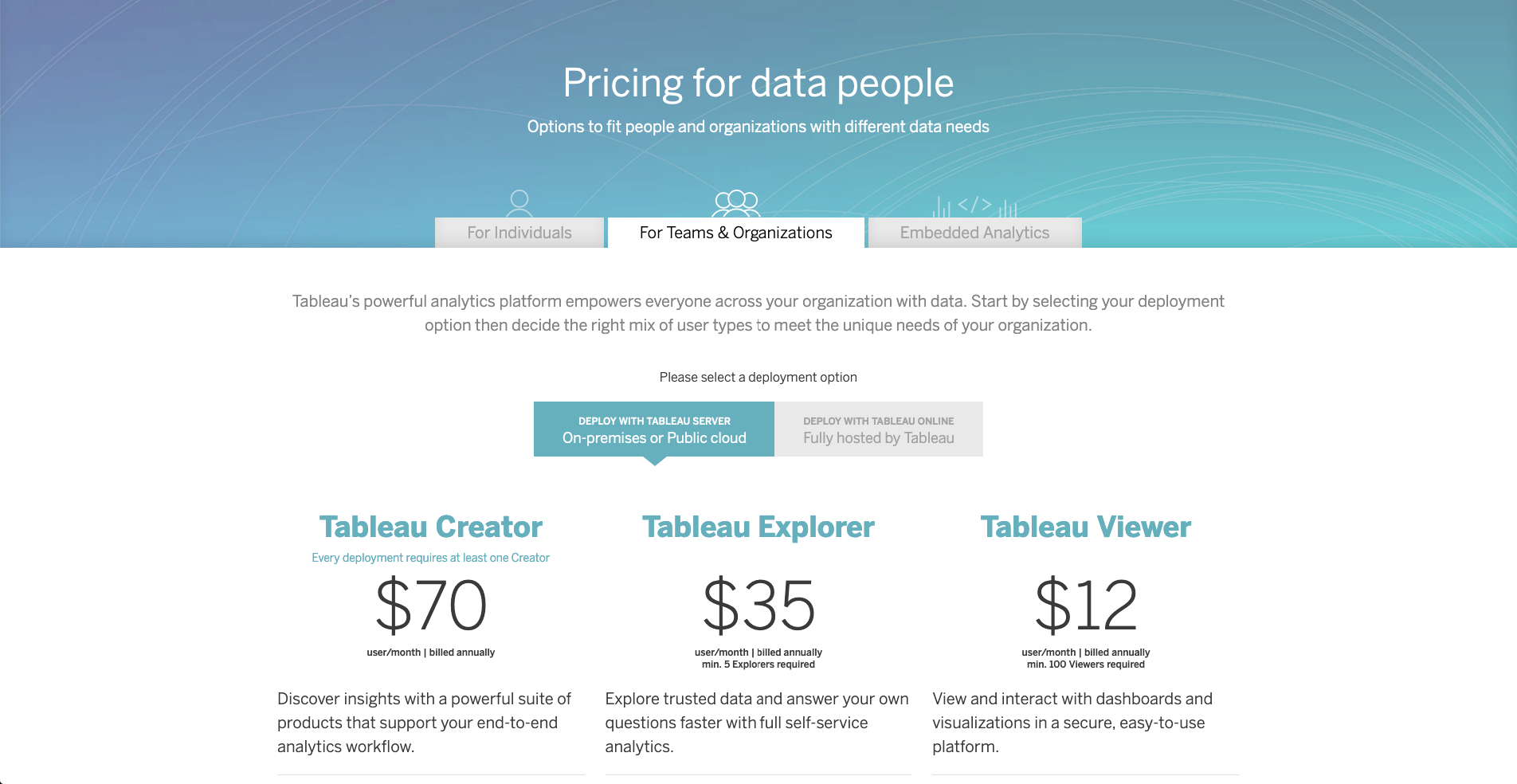
Pros
- Great visualization capabilities: a large library of charts and highly interactive dashboards
- Tableau's friendly interface allows data analysts of all experience levels to quickly begin producing compelling and useful analysis and visualizations.
- Tableau handily deals with millions of rows of data, from various data sources, including spreadsheets and SQL databases. This allows users to integrate disparate data sources that may have been difficult to connect otherwise.
Cons
- Like PowerBI, Tableau cannot handle too big a dataset. It will get very slow. If you import data from multiple sources and the data is huge, it sometimes tends to lag crash.
- Lack of BI capabilities. Tableau lacks functionality required for a full-fledged business intelligence tool, such as large-scale reporting, the building of data tables and static layouts.
- Tableau Desktop lacks the basic functionality of cleaning and prepping the data to be imported in Tableau Desktop. This is one of the major features which it lacks, you need additional support from Tableau to get these things added.
Sisense
If you knew about Periscope Data, you will know about Sisense. It's an attractive product with substantial data visualization capabilities and a friendly UI that bought Periscope back then at the end of 2019.
The portability, ability to build data cubes in the tool, and the low learning curve are Sisense's greatest advantages that make any other BI tool look behind their back.
Sisense uses JDBC connector to connect to Presto. Learn more here.
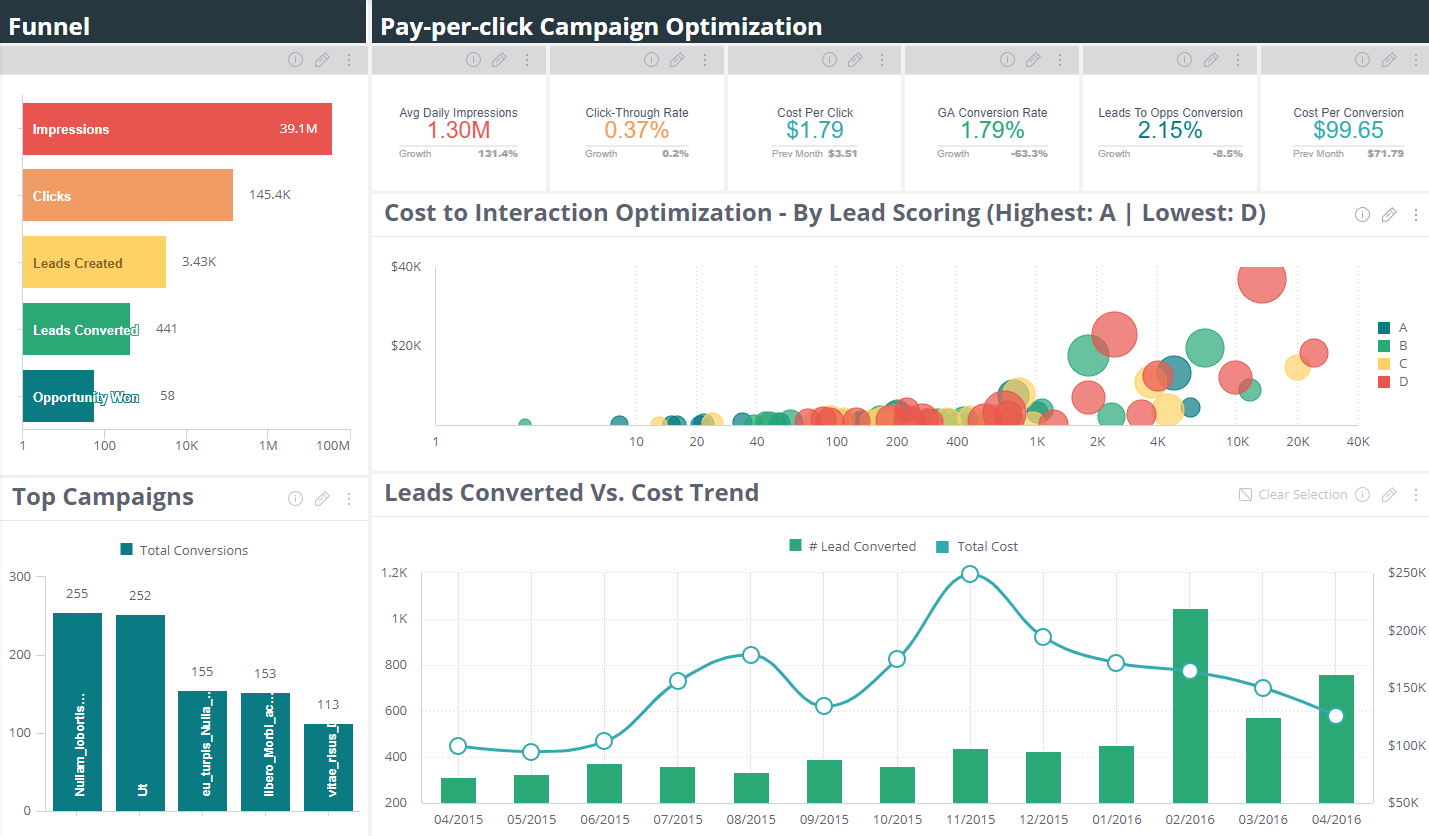
Pricing
Sisense has a custom price for each client, so there's no publicly available fixed number. Based on online forums, looks like its $10,000 a year for a self-hosted solution, and a starting price of $21,000 in the cloud (for 5 users), and can go up to $60,000/year for 12 full users and unlimited viewers.
Pros
- Sisense’s dashboards are well designed (image above). Sisense provides users with easy-to-understand dashboards that are well designed with good widgets, varied chart types, and informative KPI and metrics views.
- Web-based JavaScript scripts allow for endless customization. This is a strong advantage that not many other BI tools have.
- Customer support - the commitment to excellent customer service and ensuring organizations get the most out of their investment.
- Handling large datasets very well. Millions of data can be loaded in fewer seconds which didn't seem possible with other traditional reporting tools.
Cons
- Mobile system is not optimized yet and not as intuitive as the desktop version
- Permissions are a pain at times - only the owner of folders and dashboards can publish any changes.
- Be aware that Sisense is a heavy application. It consumes a considerable amount of server power, space and resources, and also the amount of time needed for setup and configuration and user adoption.
Conclusion
No matter which tool you choose, please be mindful to involve all stakeholders in your company to try it in real situations. There might be cases when the data team is happy with a product but the business users find it too technical to explore and get insights on their own. If you're still confused, maybe spend some time on this guidebook from Holistics' team, especially Chapter 4: Using Data where they discuss about the business intelligence landscape.
--
Note: Thumbnail photo by Nicolas Thomas on Unsplash
What's happening in the BI world?
Join 30k+ people to get insights from BI practitioners around the globe. In your inbox. Every week. Learn more
No spam, ever. We respect your email privacy. Unsubscribe anytime.
